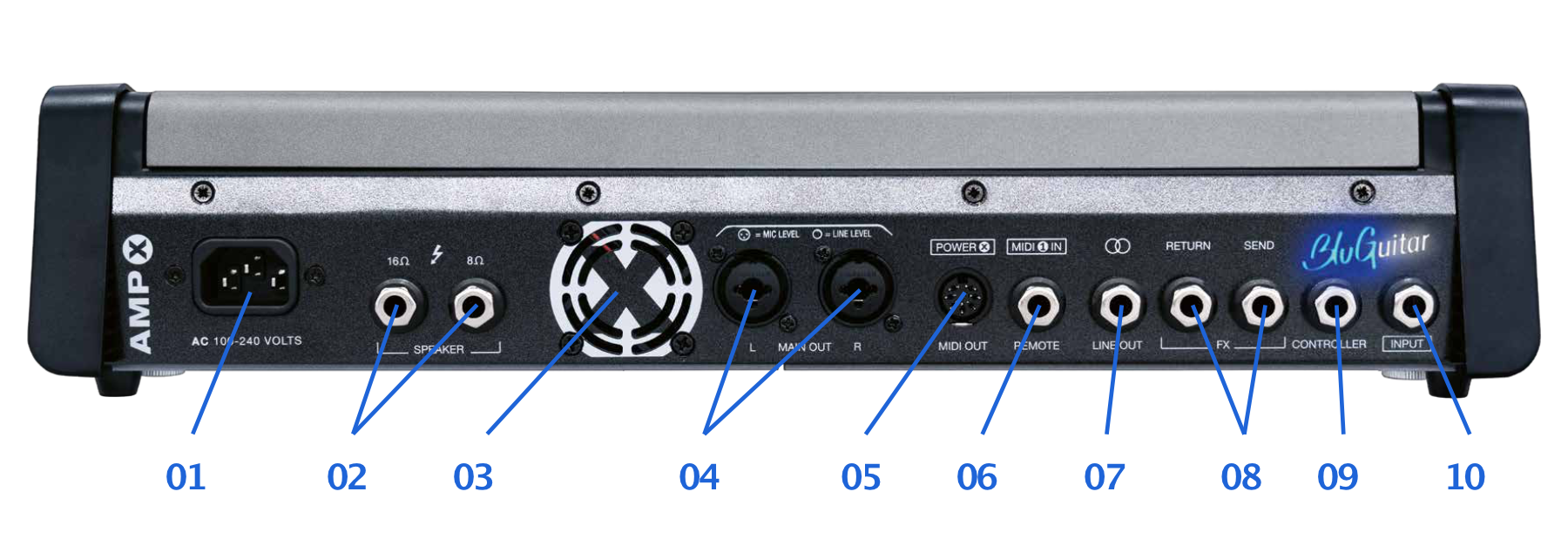Besides the internal foot switches, AMPX offers numerous possibilities for controlling functions such as preset switching via the BluGuitar REMOTES, or standard double/single footswitches as well as tap-tempo buttons or expression pedals for controlling wah-wah, volume or other effect/sound parameters. For this purpose, two jacks are available: REMOTE and CONTROLLER.
If the MIDI1 adapter is connected to the REMOTE socket, all functions can also be controlled via MIDI with any external MIDI controller.
AMPX offers five independent Outputs: Speaker Out, Stereo Main Out, and Stereo Line Out. The five internal speaker simulations can be used on any of those outputs to give you options for any imaginable setup – from a basic mono guitar speaker with additional mono or stereo direct outs available via transformer-balanced XLR, to any imaginable combination of Full Range Flat Response (FRFR) or guitar speakers, allowing you to create wet/dry or wet/dry/wet systems.
For our MIDI OUT, we also offer a special adapter that can deliver 9V/500mA to power external FX pedals.
The FX loop is designed to integrate external post-effects (mono send/stereo return) in the signal path after the amp section. This stereo loop is programmable as part of each preset: it can be selected as ON/OFF, and Serial/Parallel.

01 - POWER SUPPLY |
With our special technology, you can plug it in anywhere in the world! |
02 - SPEAKER OUT |
Connect speaker cabinets here |
03 - FAN |
Keeps your AMPX cool. |
04 - RECORDING OUT L/R |
Connect your AMPX in stereo to mixers, PAs and audio interfaces to these mic-level, transformer balanced XLR outputs. No DI-box required! |
05 - MIDI OUT |
Connect your external MIDI devices here, or use the optional POWER X adapter to power external FX pedals. |
06 - REMOTE |
Use a BluGuitar REMOTE, MIDI1 adapter for advanced switching options. Or connect a second expression pedal here. |
07 - LINE OUT |
Hook up to external amps for stereo, wet/dry, wet/dry/wet etc. |
08 - FX LOOP |
Connect your external FX devices for post-effects here. |
09 - CONTROLLER |
Use for an external expression pedal. |
10 - INPUT |
Plug your guitar in here! |
| Previous: The AMPX front panel | Next: The AMPX control concept |